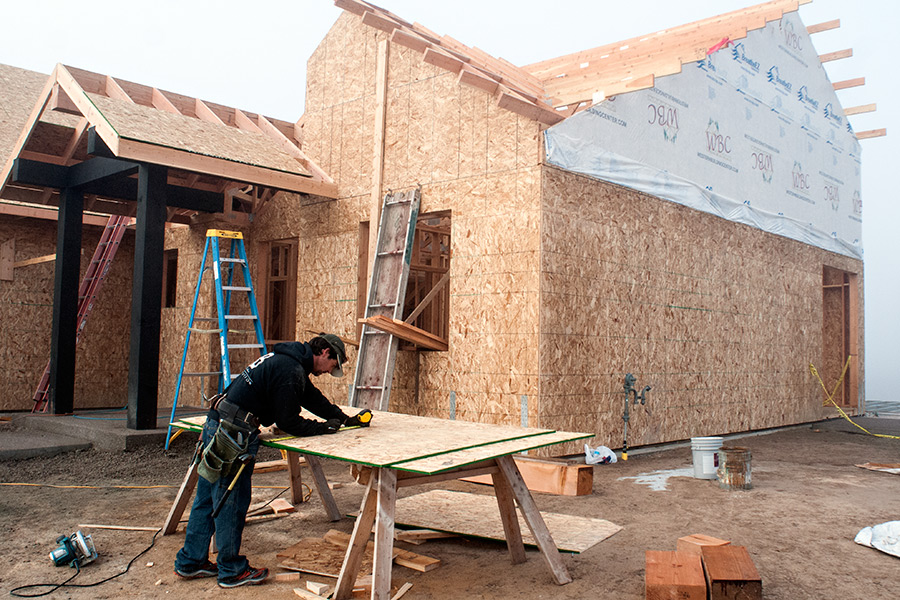Nonresident visitation is now the largest industry in the Flathead Valley, reflecting the stature of one of Montana’s top tourist destinations. Manufacturing continues to make solid gains in job growth and expand in various sectors, including food and beverage, firearms and wood products. Local construction has outpaced the statewide average and real estate sales are approaching pre-recession levels.
“Kalispell continues to grow as a regional center,” said Paul Polzin, director emeritus at the University of Montana Bureau of Business and Economic Research.
The message was clear at this year’s 40th annual BBER Economic Outlook Seminar in Kalispell: Growth is accelerating in Flathead County.
“Across the state, Flathead is the second best forecast (for 2015). There is more balanced growth here that is slightly above the statewide average,” Polzin told the crowd.
While growth in eastern Montana stalls due to plunging oil prices, Flathead and Gallatin counties have emerged as two of the leaders in economic activity. Gallatin, boosted by strong residential construction, tourism and Montana State University, was the state’s best performer in 2014. Its increase of $104.3 million in inflation-corrected wages and salaries accounted for almost 35 percent of the growth in the entire state, according to the BBER.
Flathead County came in second among the seven largest urban areas in Montana. Last year saw 2.9 percent growth in nonfarm earnings. It was the fourth consecutive year of solid gains, Polzin noted, with last year performing even better than previously reported, at 4.2 percent growth.
Polzin said forecasts show Flathead County should enjoy 3.2 percent growth this year, one of the highest gains in the state.
“Flathead is coming back in a stronger growth position,” he said. “It had a significant recession, but this rapid growth is starting to bring people out of that deep hole.”
In terms of tourism, there could be a decline in Canadian visitors as the exchange rate becomes less favorable, according to Norma Nickerson, director of the UM Institute for Tourism and Recreation Research.
“You have had the huge number of Canadian shoppers coming down here, but will that continue?” she asked. “The Canadian dollar is dropping and some estimates are that it could get as low as 75 cents to our dollar. When it was that low last time, they didn’t come here that much.”
But from a travel standpoint, the low cost of gasoline could spur further travel from across the U.S., she said.
Flathead County benefited from high visitation last year, receiving $518 million in nonresident spending, according to the latest data. That is the second highest amount of tourism-related spending in Montana behind Gallatin, which had $666 million in 2014.
A survey of tourism-related businesses showed strong optimism for 2015, with 57 percent anticipating a further increase in visitors and spending.
Nickerson noted that Glacier Park International Airport had the largest percentage growth in passengers in the state among the biggest airports last year, with a 13 percent increase.
Statewide, the trend of economic growth is looking similar to a decade ago, when counties in the western portion of the state outperformed the east.
“We’re seeing more growth across industries that have been hurting because consumer spending was weak,” Polzin said.
That includes retail and tourism, which made significant gains last year.
The agriculture industry has enjoyed some of its best years in decades since 2010, and that should continue into 2015, according to George Haynes, a professor and agricultural specialist at MSU. Cattle ranchers continue to enjoy record prices while grain producers saw relatively stable prices, he said.
“It’s been a very good year for agriculture,” he said. “We’re going through substantial changes and coming off historic highs. Now we’re probably going back to normal.”
The wood products industry, which includes timber mills, is slowly recovering as the U.S. economy grows but remains far below its levels from a decade ago, according to Todd Morgan, director of Forest Industry Research at the BBER.
The industry supplied roughly 4,400 jobs in Montana and 17 percent of the state’s labor income.
Timber mills did report more workforce reduction than other manufacturing sectors last year, Morgan said. There is a generally improving outlook for 2015, helped largely by the high price of logs, which are the most profitable since 2007. An estimated 1.1 million new home starts are predicted nationwide this year.
“It’s a good time for landowners to sell timber, and these mills definitely need it,” he said.
Statewide, BBER economists are predicting balanced growth that could be slower than recent years, largely due to fluctuations in the oil industry. This year’s conference — themed “The New American Energy Revolution” — focused on the enormous changes that have occurred on the energy front, including the sudden drop in oil prices, which are sitting at a six-year low. The consumption, production and policy of the oil industry has transformed in the last 40 years, according to BBER director Patrick Barkey.
“When you look at the big changes in energy, they really are remarkable,” Barkey said.
The average vehicle got 12.5 miles per gallon in 1976. Today the average vehicle gets 24.1 mpg. Also, the amount of mileage that Americans drove increased every year until 2007, and since then the amount has leveled off, signaling a changing dynamic in needs. Efficiency upgrades and innovations in production have also cut the cost to produce energy in the U.S. by 50 percent since 1976, Barkey said. Oil exploration has risen dramatically in the U.S., with a 92 percent increase in domestic crude oil production since 2008.
The rapidly changing energy landscape is leading to much uncertainty regarding how it will impact the nation, Barkey said.
All of this is occurring at a time when the U.S. is experiencing one of its best stretches of economic growth in “a long, long time,” he said.
